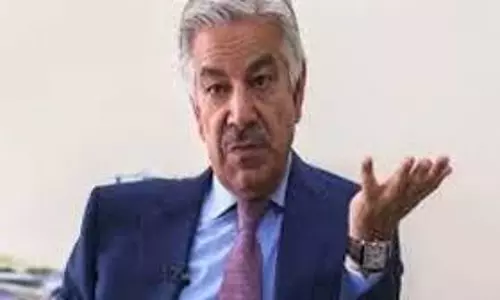
Law is not blind, but Bar questions Chandrachud’s blind judicial system changes
text_fieldsThe retiring Chief Justice of India, D.Y. Chandrachud, who is believed to be behind the bold changes in the judicial system and has drawn criticism for his remark akin to giving faith in God for a judicial solution, comes under the Bar Association’s whack, particularly for the unveiling of the redesigned iconic ‘Lady Justice’ statue.
Found blindfolded, the statue of the Lady of Justice with a sword has undergone a redesign to be found open-eyed with a copy of the Constitution in one hand instead of the sword, with Justice Chandrachud, who unveiled the statue, commenting that law is not blind, that it sees all, and the copy of the Constitution represents that it delivers justice based on it instead of the sword, which is linked to violence.
The SCBA, led by senior advocate and Rajya Sabha Member of Parliament Kapil Sibal, expressed discontent over the Supreme Court's recent decisions, particularly the statue's redesign and changes to the court's emblem.
According to the SCBA, these modifications were carried out without any consultation with the legal fraternity, a move seen as undermining their role as essential stakeholders in the judicial system. The association emphasised that such decisions should have been subject to discussion with the Bar, given its involvement in the administration of justice.
A formal objection was raised through a resolution, criticising what the SCBA described as "unilateral" actions by the Supreme Court. The association’s Executive Committee contended that they were not informed of the rationale behind these changes and felt sidelined in the decision-making process. The resolution, endorsed by nearly all committee members, was formally communicated to Chief Justice of India (CJI) D.Y. Chandrachud, who played a central role in introducing the changes.
Further fuelling tensions between the judiciary and the Bar was the Supreme Court's decision to replace the Judges' Library with a museum. The SCBA had previously lobbied for the creation of a library and a combined café-lounge for its members, citing the current cafeteria’s inadequacies in meeting the needs of legal professionals.
The construction of the museum proceeded despite the SCBA’s objections, leading to concerns that their feedback was disregarded. The Bar Association reiterated its demand for a library and leisure space for its members, viewing the museum’s location in a high-security area as problematic.
The CJI, defending the redesign of the ‘Lady Justice’ statue, highlighted a shift towards emphasising constitutional principles, opting to replace the sword with the Constitution to symbolise justice administered through legal frameworks rather than force. Critics, however, argued that this significant departure from tradition should have involved broader consultation within the legal community.
The controversy surrounding these changes follows other contentious moves by CJI Chandrachud, who has faced criticism for recent statements and actions, both inside and outside the courtroom. His remarks on the Ram Janmabhoomi-Babri Masjid dispute, in particular, drew attention. He suggested that a higher power guided his approach to the case, which raised eyebrows among observers.
CJI Chandrachud's efforts to influence judicial appointments have been a subject of discussion. His attempt to have the Supreme Court collegium recommend a senior advocate to fill a vacancy, a move that was ultimately unsuccessful, was perceived as an overreach. This, combined with the delay in recommending Justice Sanjiv Khanna as his successor, has contributed to a series of controversies that mark the final weeks of his tenure.
As his term nears its end on November 10, CJI Chandrachud's actions have ignited debates about the processes and traditions that guide the country's highest judicial institution.






















